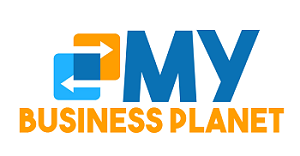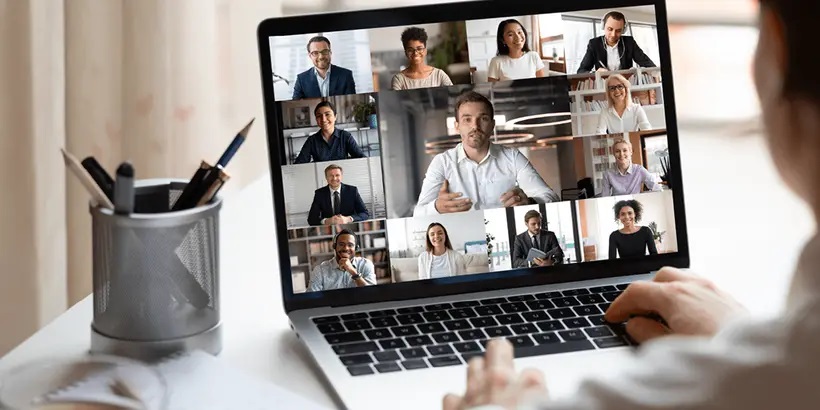In the ever-evolving world of online marketing, a webinar marketing agency has become a powerful tool to convert leads into sales. These virtual events are an excellent platform for engaging your audience, showcasing your expertise, and driving conversions. But how do you make the most of webinars to boost your business? Let’s explore practical strategies for turning your leads into loyal customers.
Understanding Webinars
What is a Webinar?
To start, let’s demystify what a webinar is. A webinar, short for “web seminar,” is An online event that enables real-time connection with a virtual audience. It’s like hosting a seminar or workshop, but it happens online. Webinars can take many forms, such as live presentations, workshops, Q&A sessions, or panel discussions.
Webinars provide a distinct opportunity to engage with your audience. I will correct any spelling, grammar, or punctuation errors in the text. Share valuable insights and build trust. Unlike pre-recorded videos, webinars are live, allowing you to engage with your viewers and answer their questions, making them a powerful tool for nurturing leads.
The Power of Webinars
Why are webinars so effective? Imagine having a room full of potential customers eager to learn from you. Webinars are like that room, only virtual. They provide a platform for you to showcase your expertise, establish authority in your industry, and connect with your audience personally.
Choosing the Right Topic
Tailoring Content to Your Audience
The success of your webinar starts with choosing the right topic. It’s essential to align your webinar’s content with your target audience’s interests and needs. What are the burning questions they have? What challenges do they face? Tailor your content to address these issues.
For instance, if you run a webinar marketing agency, your audience might be interested in topics like “Effective Webinar Promotion” or “Maximizing ROI from Webinars.” Understanding your audience’s pain points and curiosities is the first step in creating a webinar that converts.
Solving Problems with Webinars
A webinar isn’t just about sharing knowledge; it’s also about problem-solving. You establish your webinar as a valuable resource when you provide practical solutions and actionable insights. Your audience will attend your webinars and see you as an authority in your field.
Webinar Promotion
Building Hype and Anticipation
Promoting your webinar effectively is crucial to ensure a good turnout. Start by creating anticipation. Share teasers about attendees’ expectations and the value they will gain from your webinar. Utilize email marketing, social media, and your website to generate excitement and anticipation. It is essential to carefully review your work for spelling, grammar, or punctuation errors. Ensure that your writing is free of mistakes before submitting it.
Consider early-bird registrations or exclusive access to create a sense of urgency and excitement. The more excitement you generate, the more likely people will attend.
Leveraging Social Media
Social media is an effective tool to expand webinar promotion and increase audience reach. Create visually appealing posts, share behind-the-scenes content, and Encourage your followers to use relevant hashtags for better post visibility on social media. Remember to use appropriate spelling, grammar and punctuation while creating your posts.
## Engagement is Key
Interactive Elements
Engagement during the webinar is vital. Use interactive elements like polls, quizzes, and chat features to keep your audience involved. The more engaged your attendees are, the more likely they are to stay until the end and take the desired action, whether signing up for a service or purchasing a product.
The Art of Storytelling
Storytelling is a persuasive tool. Weaving stories into your webinar helps your audience relate to the content on a personal level. It makes the information memorable and relatable. Share success stories, anecdotes, and real-life examples that connect with your audience’s experiences.
Conversion Tactics
Crafting a Compelling Call to Action (CTA)
Your webinar’s success should culminate in a solid Call to Action (CTA). Whether signing up for your services, downloading an e-book, or purchasing, your CTA should be compelling and easy to follow. Use persuasive language and clarify why this action is in your audience’s best interest.
Nurturing Leads After the Webinar
The journey continues when the webinar concludes. To optimize conversions, it’s essential to continue nurturing your leads. Follow up with personalized emails, additional resources, and special offers to keep the momentum going. Make sure your audience remembers the value they received during the webinar.
Measuring Success
Analytics and Tracking
You need to measure success to know if your webinar strategies are working. Use analytics tools to track metrics like attendance, engagement, and conversion rates. Analyzing this data will help you fine-tune future webinars and make data-driven decisions.
Post-Webinar Surveys
Remember to ask for feedback. Send post-webinar surveys to attendees to understand their experience better. What did they like? What could be improved? Their feedback is invaluable in refining your future webinar endeavors.
Webinar Tools and Platforms
Choosing the Right Technology
To ensure a successful webinar, choosing the appropriate tools and platforms is crucial. Various webinar software options are available, each with its features and pricing. Consider your budget, technical requirements, and the features necessary for your webinars before deciding.
Technical Considerations
Ensure your technical setup is flawless. Test your equipment, internet connection, and the webinar platform well in advance. Technical glitches can frustrate you and your audience, so a smooth experience is crucial.
Case Studies
Real-World Success Stories
To inspire and educate, let’s delve into some real-world success stories. Learn from those who have mastered the art of webinars and see how their strategies led to remarkable results. Case studies can offer you valuable insights and inspiration to help you on your webinar journey.
Learning from Others
Successes and failures alike can be instructive. Don’t be disheartened by setbacks; they are growth opportunities. Learning from others can refine your strategies and increase your chances of converting leads.
Common Mistakes to Avoid
Webinar Pitfalls
Mistakes can happen, but forewarned is fair. Armed. Here are some common pitfalls to avoid:
– Technical Issues: Ensure your technical setup is robust.
– Lack of Engagement: Keep your audience involved.
– Overwhelming Content: Don’t overload with information.
– Poor Promotion: Market your webinar effectively.
– Ignoring Feedback: Use feedback to improve.
Overcoming Challenges
Challenges are part of the journey. Embrace them and find solutions. Webinars can be an advantageous marketing strategy when executed well.
Conclusion
In conclusion, webinars are potent tools for converting leads into loyal customers. They allow you to engage with your audience, provide valuable insights, and build trust. You can optimize your conversion rates by choosing the right topic, promoting effectively, and engaging your audience.
As you embark on your webinar journey, remember to measure your success, learn from others, and avoid common pitfalls. With the right strategies and a commitment to continual improvement, your webinar marketing agency can turn leads into valuable customers.
FAQs
How long should a typical webinar be?
Ideally, a webinar should last 45 minutes to an hour. This provides enough time to deliver valuable content and engage with your audience without overwhelming them.
What is the best day and time to schedule a webinar?
The best day and time can vary based on your audience’s preferences. Generally, either Tuesday or Wednesday, midweek, and late morning or early afternoon work well. However, analyzing your specific audience’s behavior is essential for the best results.
Should I offer my webinar for free, or should there be a fee?
It depends on your goals. Free webinars can attract a larger audience and generate leads, while paid webinars can generate revenue. Consider your objectives and target audience when making this decision.
How can I repurpose webinar content for other marketing channels?
You can repurpose webinar content by creating blog posts, social media updates, infographics, or even e-books based on the webinar content. This extends the value of your webinar and reaches a broader audience.
Can I host webinars if I need to become an expert in my field?
While expertise helps, you can host valuable webinars by thoroughly researching and preparing your content. Ensure your audience knows your level of knowledge and be open to learning and improving along the way.








